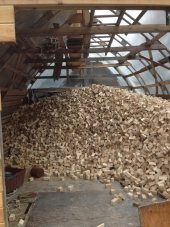








[img]http://i109.photobucket.com/albums/n52/havlik1/permie%20pics2/permiepotrait3pdd.jpg[/img]
"One cannot help an involuntary process. The point is not to disturb it. - Dr. Michel Odent








[img]http://i109.photobucket.com/albums/n52/havlik1/permie%20pics2/permiepotrait3pdd.jpg[/img]
"One cannot help an involuntary process. The point is not to disturb it. - Dr. Michel Odent








author of: The Fifty Dollar and Up Underground House Book and The Earth Sheltered Solar Greenhouse Book Visit Mike Oehler's Website








Brenda
Bloom where you are planted.
http://restfultrailsfoodforestgarden.blogspot.com/
 1
1




"the qualities of these bacteria, like the heat of the sun, electricity, or the qualities of metals, are part of the storehouse of knowledge of all men. They are manifestations of the laws of nature, free to all men and reserved exclusively to none." SCOTUS, Funk Bros. Seed Co. v. Kale Inoculant Co.








www.thehappypermaculturalist.wordpress.com








Just me and my kids, off griddin' it - follow along our shenanigans at our YouTube Uncle Dutch Farms.




www.happyhigdons.blogspot.com








www.happyhigdons.blogspot.com




How permies.com works
What is a Mother Tree ?




Burra Maluca wrote:That sounds like borax. We paid €24 for a 25kg sack of the stuff, and I think we mixed it up something like 2 cups per five liters/one gallon.
"You must be the change you want to see in the world." "First they ignore you, then they laugh at you, then they fight you, then you win." --Mahatma Gandhi
"Preach the Gospel always, and if necessary, use words." --Francis of Assisi.
"Family farms work when the whole family works the farm." -- Adam Klaus





|
Why fit in when you were born to stand out? - Seuss. Tiny ad:
Rocket Mass Heater Resources Wiki
https://permies.com/w/rmh-resources
|






